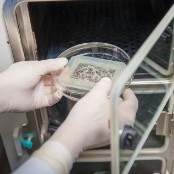


The vagina consists of a tube of autonomically-innervated smooth muscle (longitudinal outer, inner circular layer) lined by stratified squamous epithelium and a sub-dermal layer rich in capillaries. There are also multiple non-genital peripheral anatomic structures involved in female sexual responses such as salivary and sweat glands, cutaneous blood vessels and nipples. Placing a pillow under her back and getting her to wrap her legs around your lower back, while rocking back and forth to create clitoral friction can help you get the maximum amount of bliss out of missionary, but other positions typically yield better results.There are multiple anatomical structures which comprise the internal and external female genital tract such as the clitoris, labia minora and corpus spongiosum (vestibular) erectile tissue, peri-urethral glans, urethra, G-spot, Halban’s fascia, anterior fornix erogenous zone, pubococcygeus muscle and cervix. A side effect of this 30-degree angle is that in missionary position, the penis has little to no contact with the super-sensitive front wall of the vagina. The vagina tilts back 30-degrees from the opening.

What if you never found her G-spot? Whipple says, don't sweat it "There are many sensitive areas inside he vagina that, when stimulated by a finger, vibrator, or penis, can contribute to sexual pleasure." Tilt-a-whirl Supporting that belief is a study showing the similarity between the fluid expelled by a very small percentage of women through their urethra during G-spot orgasm (aka female ejaculation) and that produced by the male prostate. Some doctors believe the G-spot should be renamed the female prostate. The 4 Steps to Giving Her Multiple Orgasmsįurther examination of this spongy tissue found it identical to that of the male prostate gland, a well-established pleasure zone.She named the area the G-spot after Ernst Grafenberg, the German doctor who first documented it in 1950. In a 1982 study of more than 400 women, Rutgers University sex researcher Dr Beverly Whipple, found that when this area was stimulated after a woman was already sexually aroused, a bump of tissue speared and could sometimes trigger an orgasm. If a woman were lying on her back with a clock placed upright inside the lower part of her vagina (don't ask how it got there), the most sensitive area would be at 12 o'clock, right behind the urethra. While the vagina is nowhere near as responsive to touch as the vulva, it does contain hundreds of nerve endings.
#Vagina shapes front skin#
"Elliptical shafts are more likely to become ingrown after shaving or waxing as the hair curls in, pierces the skin and creates a bump," says dermatologist Dr Susan Taylor. The shape of the hair shaft differs depending on their ethnicity in Asian women they're typically round, in women of African decent they are elliptical, and in Caucasians and Latinas they range between the two.
#Vagina shapes front crack#
#Vagina shapes front full#
In a body full of hardworking organs the clitoris is like Paris Hilton – it does nothing but party. The rugae stretch and retract to accommodate objects ranging from your penis to 10lb babies. As for the texture inside the vagina, it's full of bumpy ridges called rugae. Those are the remnants of the hymen, a thin membrane that once partially covered the entrance but has been torn or pushed aside by sexual intercourse. "The tips of the nipples and the labia are similar because they both contain small, bumpy-looking glands." When going down on a girl you may also notice that the entrance to the vagina also has a ruffled border or just a few irregular bits of skin. "Labias come in all shapes and sizes," says Dr Stewart. Most of the vulva is smooth, but some women's labia minora have a ruffled appearance. The vulva and the vagina feature a variety of textures. In both case, a water-based lubricant (spit does the job very well too) is key to ensuing a smooth entry. Unfortunately in some women lubrication occurs for only a few moments then stops. In missionary position, most of this fluid collects in the back of the vagina and fails to lubricate the opening, making sex uncomfortable. The Bartholin's glands – on either side of the vaginal opening – also pump out a few beads of slippery mucus. That's because the lining of the vagina fills with blood during arousal, causing the salt water in blood plasma to push through the vaginal wall.


 0 kommentar(er)
0 kommentar(er)
